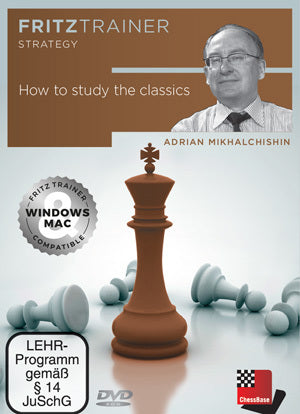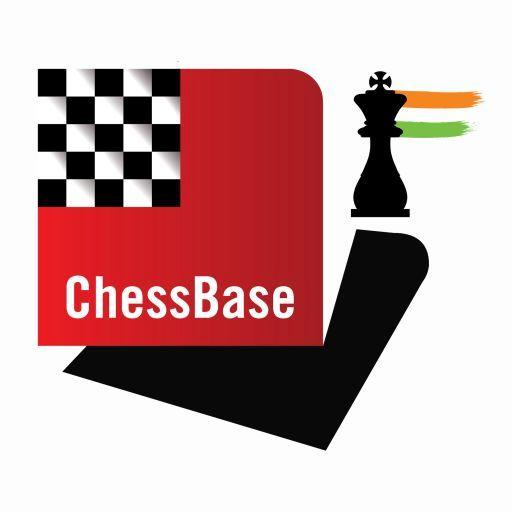How to study the classics by Adrian Mikhalchishin
How to study the classics by Adrian Mikhalchishin
Couldn't load pickup availability
How to study the classics by Adrian Mikhalchishin
Chess education is based on examples of great players of the past. Most of the typical methods of attack, analogous plans and correct ways of conducting different endgames happened for the first time in their games. On the basis of these games, numerous books have been written about endgame subjects and endgame technique. Even concerning openings, the great Alexander Alekhine said that theory is simply the practice of the masters!
Naturally every developing player has to study these examples, as he will face similar positions and problems in his practice. The more a player knows of these positions, the more frequently he will be able to apply the necessary ideas in the correct way. Of course, there are many basic positions in endgames and precise variations in the openings, which have to be remembered by heart. But the greatest part of endgame and middlegame play consists of knowledge of typical plans and typical tactical motifs, which can be used for different purposes. To help you attack the opponent’s king or simply to help you implement plans faster and more effectively. Every young player has to study them and that is possible just from the games of the great players. Vladimir Kramnik once said that at the moment when he decided to fight for the World Championship, he spent one year just analysing all the matches of the WCh. In general, we have to study the classics in two ways: 1) As we explained, in the books on the endgame and the middlegame. Different important subjects are studied from the selected games of the greats. 2) Every top player had his or her own speciality. Like Rubinstein was the greatest master of the ‘exchange technique’, Botvinnik was master of ‘centralisation’ and Alekhine was the greatest player in developing an opening initiative. For each of them there are extraordinarily instructive examples in which they employed their own favourite methods. Another problem exists – in the chess world we don’t have many good books on the middlegame and for this reason young players have problems knowing how to study the classics. Different tactical methods do exist and for these subjects we have plenty of good literature. We will present a few examples showing how the same tactical methods were developed by the top players and how more complicated it became over the years. The same situation is true of the development of typical plans in classical structures.
• Video running time: More than 5 hours (English)
• With interactive training including video feedback
• Extra: Database with more Classics
Sample video
- Introduction
- How to use the classics in your own games
- Game 1: Mikhalshichin - Bronstein, 1980
- Game 2: Olafsson - Fischer, 1958
- Game 3: Mikhalchishin - Beliavsky, 1981
- Game 4 and 5: Vidmar - Tarrasch, 1906 and Mikhalchishin - Lalic, 1985
- Strategic handling of manoeuvres
- Flank attack
- Dynamic counter attack in classical openings
- Sacrifice on e6 in the Sicilian
- Sacrifice on b5 in the Sicilian
- The rook transfer
- Strategic handling of typical pawn structures
- Attacking in the King's Indian
- Preventive strategy in development
- The knight on e5
- Central strategy with a pawn on d5 Part 1
- Central strategy with a pawn on d5 Part 2
- Opening the centre in Maroczy structures Part 1
- Opening the centre in Maroczy structures Part 2
- Miscellaneous
- Endings with the bishop pair
- Changing the central structure Part 1
- Changing the central structure Part 2
- Changing the central structure Part 3
- Changing the central structure Part 4
- Changing the central structure Part 5
- Exploitation of weak squares Part 1
- Exploitation of weak squares Part 2
- Modern Attack in the French Defence Part 1
- Modern Attack in the French Defence Part 2
- Exercises 1-10
- Exercise 01
- Exercise 02
- Exercise 03
- Exercise 04
- Exercise 05
- Exercise 06
- Exercise 07
- Exercise 08
- Exercise 09
- Exercise 10
- Exercises 11-20
- Exercise 11
- Exercise 12
- Exercise 13
- Exercise 14
- Exercise 15
- Exercise 16
- Exercise 17
- Exercise 18
- Exercise 19
- Exercise 20
- Exercises 21-31
- Exercise 21
- Exercise 22
- Exercise 23
- Exercise 24
- Exercise 25
- Exercise 26
- Exercise 27
- Exercise 28
- Exercise 29
- Exercise 30
- Exercise 31
- Bonus
- Analysis
- More Classics
- Exercises
System requirements:Minimum: Pentium III 1 GHz, 2 GB RAM, Windows 7, DirectX9 graphic card with 256 MB RAM, DVD-ROM drive, Windows Media Player 9 and internet connection for program activation. Recommended:PC Intel Core i7, 2.8 GHz, 4 GB RAM, Windows 10, DirectX10 graphic card (or compatible) with 512 MB RAM or better, 100% DirectX10 compatible soundcard, Windows Media Player 11, DVD-ROM drive and internet connection for program activation.
Information regarding product delivery
Information regarding product delivery
*Pre-ordered digital products will be delivered by email on the launch date of that product.
Digital Products (Softwares, Magazines, etc)
All digital products are delivered instantly. Once your payment is successfully processed, you will receive the following instantly via email:
- Serial key
- Setup files
- Installation procedure
Please ensure you provide the correct email address during checkout, as the serial key and files will be sent to that email address instantly upon successful payment.
Physical Products (Books, Chess Sets, etc)
These will be shipped to your address via third-party courier partners.
We dispatch all orders (except customised t-shirts) within 1-2 days. Orders placed on weekends and holidays may take 1-2 additional days to ship, as we do not operate on these days.
Delivery timelines are as follows:
- Standard Delivery (India): 7–10 working days
- Express Delivery (India): 2–5 working days
- International Shipping: Estimated 2 weeks (may vary based on destination and customs)
You will receive a tracking link via email once your order is dispatched.
Regarding MacOS compatibility for softwares
Regarding MacOS compatibility for softwares
Although not officially supported on Mac, there is a workaround that people find helpful. You can check it here.
Important note for international customers
Important note for international customers
We sell digital products (softwares) and most of our physical products only in the following 11 countries:
India, Bangladesh, Nepal, Bhutan, Maldives, Sri Lanka, Thailand, Indonesia, Pakistan, Malaysia, Philippines.
If you do not belong to any of these countries, you can still buy some high-quality products that we ship worldwide. Please check those out here.
- Trusted Since 2016
- Premium Quality
- Free Delivery
Share



